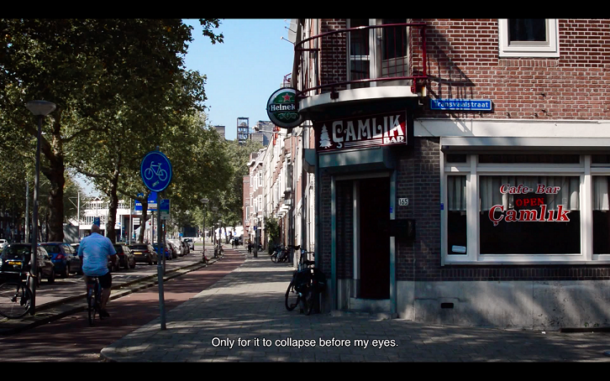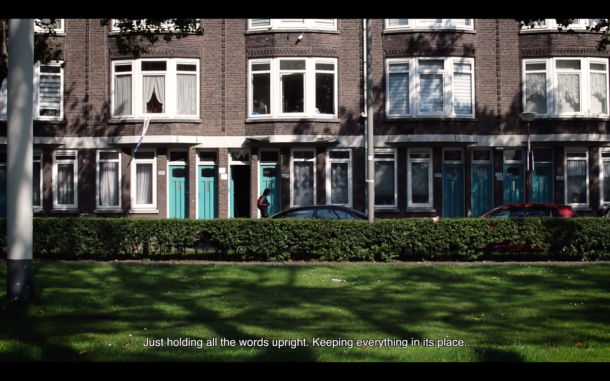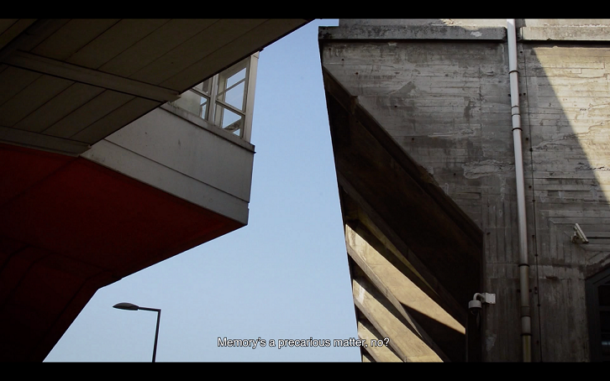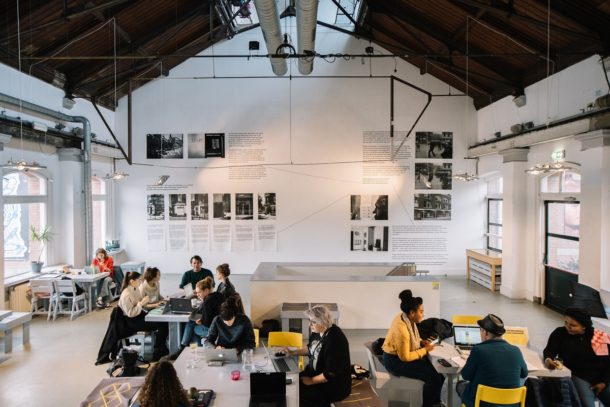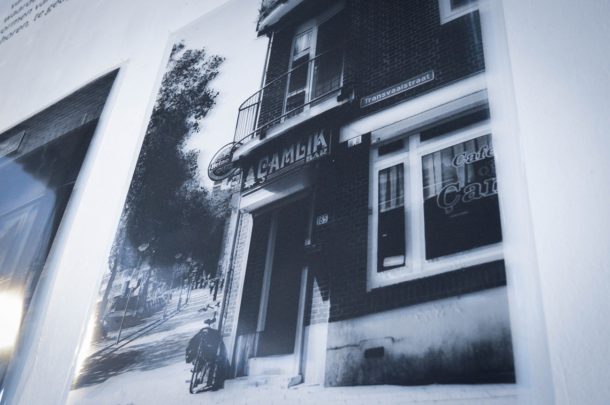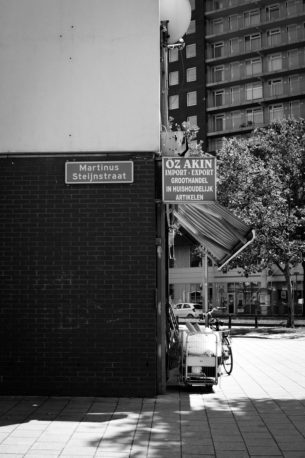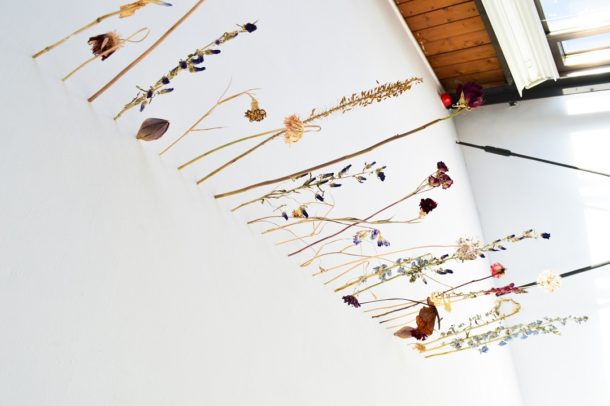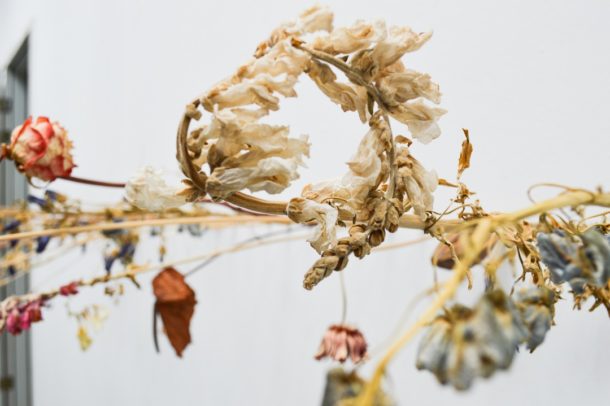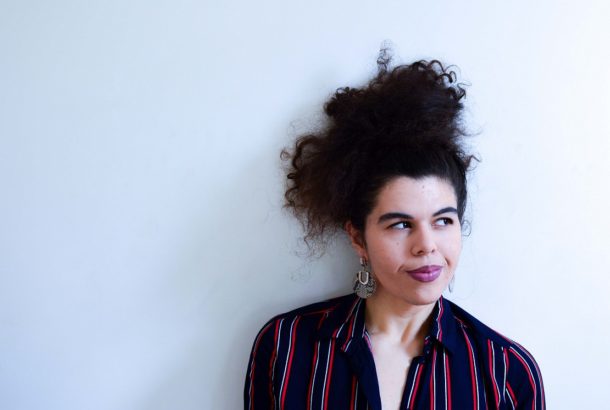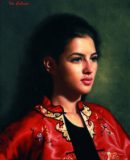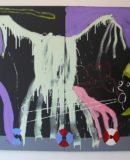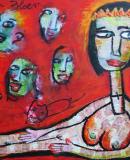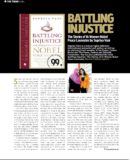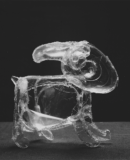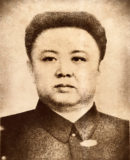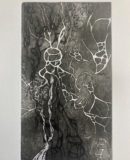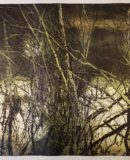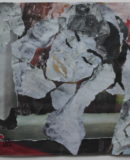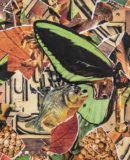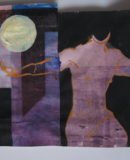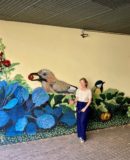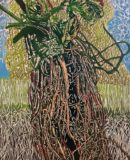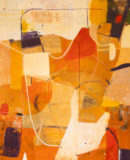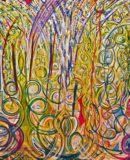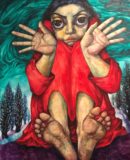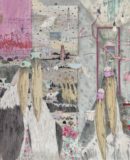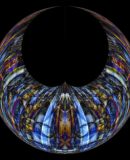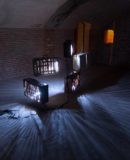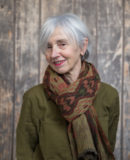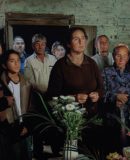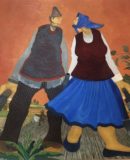World Fine Art Professionals and their Key-Pieces, 360 - Hannah Dawn Henderson
World Fine Art Professionals and their Key-Pieces, 360 – Hannah Dawn Henderson
Recently I saw at Stroom The Hague a few video works, one of them ‘Testament’ by Hannah Dawn Henderson. It was part of the Time-Based program with six films by national and international video artists. One of them is Hannah Dawn Henderson.
Hannah Dawn Henderson is an artist and writer who alternately lives and works in The Hague, Amsterdam, and Manchester (UK). She has participated in international exhibitions and projects, and her texts have been published worldwide, as part of performance events, seminars and lectures. She is currently artist-in-residence at the Rijksakademie Amsterdam.
‘Testament’ was made as part of the exhibition series ‘Wider Perspectives’ in Het Gemaal op Zuid (2019, Rotterdam), commissioned by Afrikaanderwijk Coöperatie, in collaboration with Furtado Melville.
Poetic picture of the Afrikaanderwijk
In Testament, an unnamed figure wanders through an urban landscape, looking for someone or something that looks familiar. Her absent-minded gaze scans the neighborhood – a dense archive of conflicting historical and contemporary stories: the sounds of a nearby construction site next to protest texts chalked on the sidewalk, street names honoring a colonial legacy, a monument to migrant workers.
Testament paints a poetic picture of the Afrikaanderwijk in Rotterdam by interweaving the neighborhood’s past and future. In this way, the film refers to feelings of belonging, as glorified in monuments, but also to the experience of being excluded. Personal stories and the collective memory become intertwined and are punctured by gaps in the story, incompleteness, censorship and unrest.
Monument
It was a commissioned work, says Hannah when I speak with her about the project at Coffee Company The Hague. “I was given the title ‘Testament’. It was my thematic departing point. While walking though the area and preparing for filming I wanted to re-trace the history and events that have and are taking place there. I was intrigued by a monument in a park. It is the first and only monument dedicated to guest workers — that is how economic migrants coming from states such as Turkey and Morocco were called. The area was close to the harbour and the intention was that migrants would work in the port.”
Racial tensions swiftly arose, largely underpinned by economic factors. “Opportunistic landlords exploited the increased need for housing by over-renting poorly maintained properties well beyond their capacity, resulting in deteriorated living conditions. This resulted in 1972 in violent clashes between residents over the course of three days, during which tenants of non-Dutch heritage were physically dragged from their homes. The response of Rotterdam’s municipality was to legislate policy limiting the number of migrant residents. The monument, I suppose, offers a kind of reconciliation, but I wonder what does it mean that today in the context of other events happening in the neighborhood.”
South African Boer Heroes
The names of the streets in the district refer to prominent political figures of the ‘Boer War’ — a conflict between Afrikaners, with Dutch roots, against the British at the turn of the 19th and 20th century in South Africa. In every major city in the Netherlands there is a similarly named quarter,
with street names such as Steyn, Kruger, Kritzinger, Hertzog, Botha, and Christiaan de Wet. “Many people, particularly of a younger generation, don’t know what those names mean. After the renovation of the district, busts of these people — which first hung against the gable walls — were placed in the lobby areas of the new apartments. It spoke nothing to the residents, often second-generation migrants.
Sometimes she lets the camera ‘hang’ for a while. Like at a bar with a Turkish name that refers to a small village in a Turkish province, and the sign with the street name of a Boer politician.
“In the ongoing renovation, gentrification, some citizens are less valued. They are more or less blamed for not earning enough. The ‘betterment’ of the neighborhood seems to be predicated on the notion that the ideal resident is financially advantaged. But there are many factors that place these residents at a disadvantage within this economical, social framework — and this is extremely important to recognise. Without that a more thorough analysis, we won’t see the bigger picture.”
Social themes
Her work deals with social themes, says Hannah Dawn Henderson. “My works generally address sociological themes in a manner that – though not denying or otherwise undermining the political charge that such themes sometimes carry – tends to bear a more lyrical and intimate tone than an ideological one. I’m fascinated by this subversive potential that a narrative, literary voice can propose – how, by drawing attention to the ‘poetics’ that exist in the politics and negotiations of everyday life, one can gently interrupt the rhythm and frameworks by which we commonly perceive the world around us.”
Some of her video works have a specific background context. “For example, some of my works respond to artefacts and materials that belong to formal, institutional archival collections. However, there are also works in which I take a more overtly auto-ethnographic approach – departing from and abstracting elements of my own biography or lived experience in the process of interrogating broader questions relating to identity, heritage, the thresholds of what is and isn’t a universal experience and what conditions determine such relatability.”
Resisting limitations
How would she describe her central theme? “I would describe it as a question – namely: what kind of knowledge and perspectives emerge from the experience of inhabiting a position that appears as compromised? In other words: when one encounters limitation – eg. to be in a pose that is awkward, restrictive, perhaps even demeaning – what routes towards self-understanding, perhaps even self-empowerment, present themselves? How does one not only ‘deal’ or ‘contend’ with experiences of illegibility, illegitimacy and ineligibility, but actually thrive in such states? In this regard, to ‘thrive’ doesn’t mean to do away with fragilities and critique, but rather to integrate them into one’s self-understanding as testaments to one’s resilience.”
“For example, I am often described as an ethnic minority — more specifically, I am often addressed with terms that situation me in a certain racial categorisation. This is a process of what can be called ‘racialisation’ — and we can often take those kind of categorisations as objective descriptions, but they aren’t. Where do these categories come from? What purpose have they served in the past? It’s important to ask these question — to think about the language one is using and how it shapes one’s ideas about both one’s self and other. So, when I am described, for instance, as ‘mixed race’ — because I have a father who is read as ‘white’ and a mother who is read as ‘black’ — I find that kind of wording very limiting and dubious. That’s a frustrating experience, not a positive one — but
because of that very frustration I feel compelled to question the concept of how society conceptualises ethnicity, marginalisation, the idea of being in ‘the minority’. So, what I mean is: the external limitation creates a kind of internal expansion in one’s thinking. This is a kind of resistance. You can also think about it in a more metaphorical way: if someone is holding you in so tightly you can’t really move, you will naturally start to look for different ways of moving — you will start to notice all the little spaces where you do have room to move, even if the majority of your body is restricted and limited. By concentrating on those small spaces and the possibilities that these spaces propose, you find a way to loosen the grip of the other person. You find a way to free yourself.”
Why is this theme important to her?
“It has much to do with being of diasporic heritage and the sensibilities this has nurtured in me.” Hannah’s grandmother and great grandmother are from Jamaica and also her mother was born here. Via her mother, her background interweaves multiple complex, diasporic legacies — the transatlantic Slave Trade, the post-Abolition arrival of indentured labourers from south Asia, and the Sephardic Jewish presence in the Caribbean. “When one possesses a migratory background, certain dichotomies – such as ‘insider’ and ‘outsider’ – no longer hold up as true diametric oppositions. Fragility doesn’t exclude resilience, though we may think of those concepts and experiences as opposites. Similarly, nomadism does not cancel out the capacity to experience belonging – rather, it nuances and augments what the very notion of ‘belonging’ means, taking it beyond premise of a nation state for instance.“
She is interested in how to go beyond dualistic ways of thinking and narrating. “How to both critique but also circumvent rigid narratives and limiting terminology. It’s important to me because language has such a significant role in shaping our individual and collective imagination as a society – and those kind of dominant, canonical narratives oftentimes have a kind of exclusionary nature that perpetuates itself. I’m looking to find other ways of transposing and communicating experiences of ‘otherness’ and alterity – embracing illegibility, the periphery, the unfixed.”
Does she have a Key-work?
She has, and it is inspired by the language of flowers. “Though quite different from most of my other works, the sculpture-installation ‘accusers/confessions (trying to resist the urge to fall’) (2020-2021) has a particular significance to me. I feel it marked a kind of moment of acceptance – a kind of reconciliation that not every experience can be put into words or should necessarily have to be. The work consists of thirty dried flowers, installed in such a way that they ‘stand’ in a line, jutting out horizontally from a wall. The line measures 165cm wide. This corresponds to my height, and the number of flowers recollect my age at the time of the work’s creations.”
A special story
How it came about is a special story, connected to the corona time. “Back of the beginning of 2020, I began my residency at the Rijksakademie van Beeldende Kunsten in Amsterdam. Around two and a half months in, the covid-19 pandemic reached the Netherlands and we went into the first of several lockdowns. As I live in The Hague, this naturally meant no commuting to Amsterdam. I remember leaving the studio on a Thursday evening – the 12th March, thinking I’d be back the following day – and not returning until around four or five weeks later. When I returned, I had some kind of anticipation that somehow my studio would look different than how I’d left, but when I opened the door I saw that the only thing that had clearly changed – the only indication of time having passed is that a bouquet of mixed flowers had begun to dry out. I had bought these flowers a week before the lockdown was announced. I continued to preserve these flowers over the following year and a half,
taking care to ensure their stems would remain in tact and strong. I say I ‘preserved’ them, but in reality I think they were actually sustaining their own preservation …”
How long is she an artist? And what is her experience with art-life?
“I graduated from my masters in 2014 from The Royal Academy of Arts in The Hague in the department of Artistic Research. Since then I have been working independently. Prior to my masters I trained in graphic design at the University of Salford, UK, and AKV Sint Joost, NL. Breda.”
Finally, does she have something special to end with, a bit philosophical preferably ?
She has. “There is a word that I have been rather fascinated by in recent years – the word ‘baraita’, or ’baraitot’ in plural. It is Aramaic in origin. I’ve encountered it many times whilst reading the Bavli – a kind of cross-chronological compilation of diasporic, discursive texts that combine folklore and anecdotes with legal and ethical debates. Loosely, ‘baraita’ means something to the effect of ‘a teaching that comes form the outside’. The Bavli records these lengthy debate between sages – usually all in disagreement with one another – and then, suddenly, one of these sages remarks: ‘But it was taught in a baraita …’, and then introduces another perspective that hadn’t been previously considered. So, a baraita can be understood as a practise or periphery perspective, coming form outside of the canon – outside of the established norm – and that interrupts and re-orientates that very canon. I also find it striking that grammatically this word is feminine. I would like to think of this notion of the baraita as both a metaphor and a methodology – a way of looking, moving through the world – a way of cultivating and proposing knowledge.”
Images:
1) Testament – Film still 1, 2) Testament film still 2, Testament Film still 3) Testament installation at Het Gemaal op Zuid -Foto by Katarina Kjazbec, 5) Testament installation, 6) Testament – photo series, 7 – 9) Accusers Confessions, installation – 2020-2021, 10) Artist Portrait https://www.hannahdawnhenderson.net/ https://www.instagram.com/explore/tags/hannahdawnhenderson/ https://www.stroom.nl/activiteiten/tentoonstelling.php?t_id=620811
https://www.hannahdawnhenderson.net/https://www.instagram.com/explore/tags/hannahdawnhenderson/https://www.stroom.nl/activiteiten/tentoonstelling.php?t_id=6208115https://ifthenisnow.eu/nl/verhalen/de-wereld-van-de-haagse-kunstenaar-113-hannah-dawn-henderson
Disclaimer: The views, opinions and positions expressed within this guest article are those of the author Walter van Teeffelen alone and do not represent those of the Marbella Marbella website. The accuracy, completeness and validity of any statements made within this article are not guaranteed. We accept no liability for any errors, omissions or representations. The copyright of this content belongs to Walter van Teeffelen and any liability with regards to infringement of intellectual property rights remains with the author.

